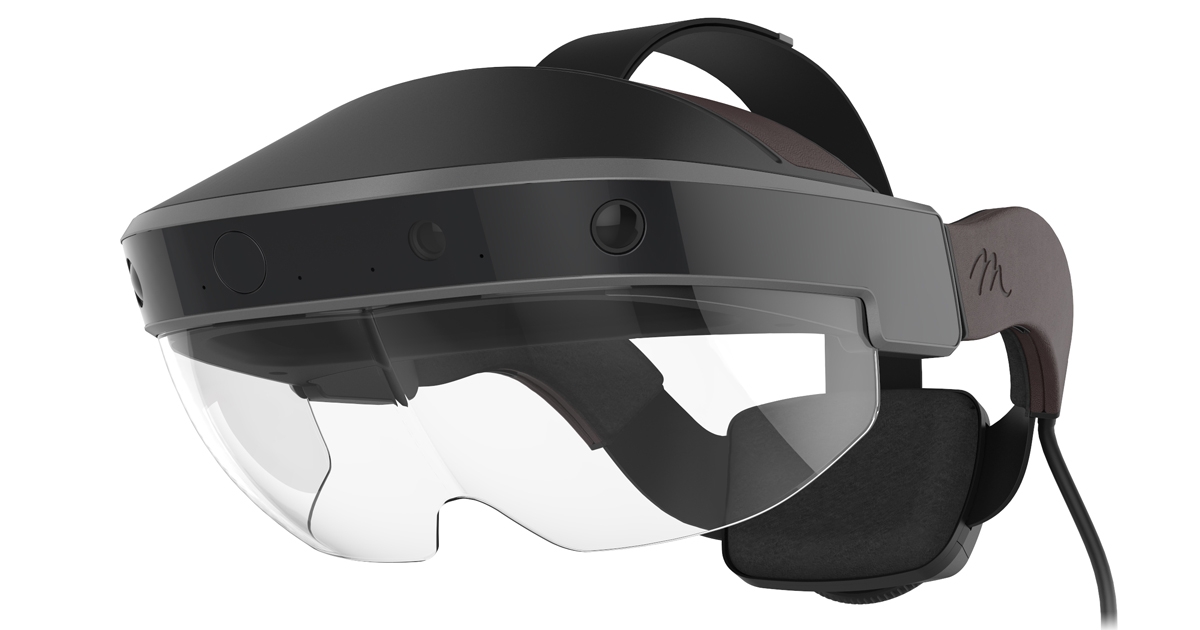Best cheap HoloLens alternatives: Solos
Solos is aimed at cyclists, rather than the everyday tech enthusiast. While it might not look like much on the surface, the Solos pack a small heads up display that will show cyclists important information on the fly, including speech, heart rate and power zones. The manufacturer says it’ll also work with existing apps like Strava and MapMyRide, along with offering navigation and Bluetooth compatibility. Release date: 2017 Price: $599
Best cheap HoloLens alternatives: Merge Holo Cube
While the Merge VR mobile headset has been on the market for a year, Merge has been working on something greater – the Holo Cube. While it’s not room-scale augmented reality, the cube, when used in conjunction with the Merge VR headset, will display holographic images in real time. While the uses are fairly limited at the moment (you can raise a tamagotchi-esque pet in the cube, along with looking at the brain and solving a Rubik’s cube), Merge hopes developers will take the technology and run with it. If it’s AR on a budget you’re looking for, the Holo Cube could be the way forward. No word on pricing or release date just yet, but expect the Merge Holo Cube to ship at some point in 2017. Release date: 2017 Price: TBC
Best cheap HoloLens alternatives: Lenovo Phab 2 Pro
While these aren’t augmented reality glasses, Lenovo’s Phab 2 Pro will ship with Google’s Project Tango AR sensors on-board. This means it can track objects in three-dimensional space, react to movements, recognise objects like tables, windows and walls and accurately capture the dimensions of the room for accurate tracking and a decent mobile-powered AR experience. It won’t work in Cardboard-esque mobile viewers, but you’ll be able to interact with the augmented reality world via the Phab 2 Pro. Release date: Available now Price: £499 from Lenovo
Best cheap HoloLens alternatives: Meta 2
Unlike others in this roundup, the Meta 2 isn’t powered by an Android-esque unit – instead, it plugs into your PC akin to the likes of the HTC Vive and Oculus Rift. Following numerous iterations during the prototype stage, the Meta 2 development kit boasts a 90-degree field of view with a high-resolution display, allowing for highly detailed holographic imagery. The coolest part of the Meta 2? You can interact with the holographic imagery with your hands naturally. It’s aimed at developers looking to create AR-enabled experiences, but more tech-y consumers can also pre-order one online. Release date: Shipping ‘soon’ Price: $949 from Meta
Best cheap HoloLens alternatives: ZapBox
If Google Cardboard is a little basic for you, maybe ZapBox is more up your street. After being successfully funded on Kickstarter, ZapBox aims to be the Google Cardboard for augmented reality, offering a full AR kit for as little as $30. In a similar way to Cardboard, ZapBox utilises your smartphone’s camera, processors, display and gyroscope to provide users with mixed reality experiences. As ZapBox uses paper sensors around the room to track the position of the camera, you’re free to walk around and inspect the virtual object in front of you without fear of loss of tracking. ZapBox ships with a number of short experiences that’ll let you play mini-golf or examine the surface of Mars from the comfort of your living room. Even if the camera loses sight of all sensors, it uses the built-in gyroscope as a backup. It’s not perfect, but it’s a great intro to augmented reality and an impressive bit of kit for only $30. Release date: April 2017 Price: $30 from Kickstarter
Best cheap HoloLens alternatives: Epson Moverio BT-200
Unlike with Google Glass-type smart glasses, Epson is opting for a more immersive AR experience with the Moverio, offering a 960 x 540 pixel overlay over each eye. It’s nowhere near the most attractive AR headset available on the market with thick arms and glass that looks as thick as double glazing, but the built-in tech makes it worth the sacrifice. It features a 0.3Mp camera, Bluetooth, Wi-Fi, 8GB of storage, built-in GPS, compass, gyroscope and accelerometer, all while managing to provide six hours of battery life. While it won’t pair with your phone, the BT-200 is controlled via a special cable-connected control box featuring a touch panel. It features Epson’s own store instead of Google Play, with around 80 apps available at the time of writing, although Android apps can be side-loaded. It’s more aimed towards enterprise rather than consumers, but the AR glasses are available for all to buy right now. Read our Epson Moverio BT-200 review here. Release date: Available now Price: £519.99 from Epson
Best cheap HoloLens alternatives: Vuzix M100 Smart Glasses
Pitched as the original competitor to the failed Google Glass, the Vuzix M100 Smart Glasses are readily available to buy – although they’re still on the pricey side at £799. The smart glasses will work with a handful of side-loaded Android apps along with apps available via the Vuzix app store, and will come with a few pre-installed. Pre-installed apps include an audio recorder, camera, photo gallery and eyesight-based barcode scanner, with users interacting with the glass via voice activation or the physical keys on the side of the glasses. In terms of tech, it features a 5Mp camera with 1080p video recording capabilities, Bluetooth, Wi-Fi, 4GB storage, built-in GPS and a six-hour battery life. Release date: Available now Price: £799 from Vuzix Lewis Painter is a Senior Staff Writer at Tech Advisor. Our resident Apple expert, Lewis covers everything from iPhone to AirPods, plus a range of smartphones, tablets, laptops and gaming hardware. You’ll also find him on the Tech Advisor YouTube channel.




